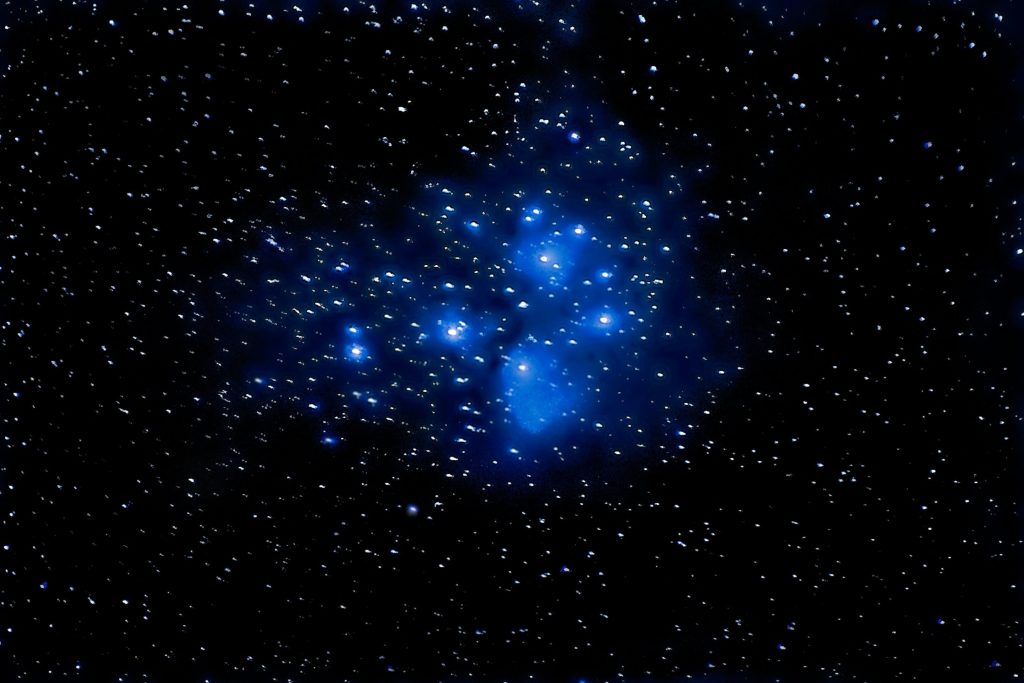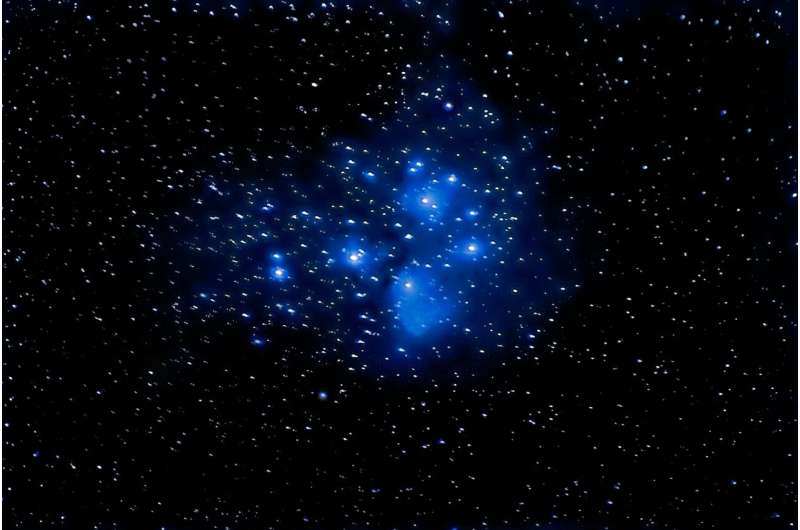Pleiades star cluster shown to be merely one component of a large stellar family.

Pleiades star cluster revealed as just one part of a vast stellar family (Image Credit: Phys.org)

Astronomers at the University of North Carolina at Chapel Hill have discovered that the famous Pleiades star cluster, the “Seven Sisters” often spotted on winter nights, is just the bright tip of a much larger stellar family. The research paper appears in The Astrophysical Journal
Uncovering the Greater Pleiades Complex
By combining data from NASA’s Transiting Exoplanet Survey Satellite (TESS) and the European Space Agency’s Gaia space telescope, the team uncovered thousands of hidden siblings spread across the sky, a sprawling structure they call the Greater Pleiades Complex. The discovery shows the Pleiades is 20 times larger than previously thought.
Most stars, including our own sun, are born in groups. Over time, these stellar siblings drift apart, making it difficult to trace their origins. Using stellar spin rates as a “cosmic clock,” young stars spin quickly, while older stars rotate more slowly.
The UNC-Chapel Hill team identified long-lost members of the Pleiades scattered across the sky. By combining rotation measurements from NASA’s TESS with precise position and motion data from ESA’s Gaia, the researchers redefined the Pleiades not as a small star cluster but as the dense heart of a vast, dissolving stellar association.
“This study changes how we see the Pleiades—not just seven bright stars, but thousands of long-lost siblings scattered across the whole sky,” said Andrew Boyle, lead author and graduate student in physics and astronomy at UNC-Chapel Hill.
The findings have broad implications. The Pleiades is not only an astrophysical benchmark for young stars and exoplanets but also a cultural touchstone featured worldwide in the Old Testament and Talmud, celebrated as Matariki in New Zealand, and even represented by the logo of Subaru in Japan.
Implications for mapping our galaxy
“We’re realizing that many stars near the sun are part of massive extended stellar families with complex structures,” said Andrew Mann, co-author and professor of physics and astronomy at UNC-Chapel Hill. “Our work provides a new way to uncover these hidden relationships.”
By tracking stellar rotation, the team’s approach offers a fresh framework for mapping our cosmic neighborhood. The researchers anticipate that many seemingly independent star clusters are in fact parts of sprawling stellar families. Future studies using this method could even help astronomers trace the origins of the sun itself, uncovering whether it, too, was born in a much larger stellar family.
“By measuring how stars spin, we can identify stellar groups too scattered to detect with traditional methods—opening a new window into the hidden architecture of our galaxy,” Boyle said.
This research aids in efforts to reconstruct the birth environments of stars and planets, an essential step toward understanding how solar systems, including our own, form and evolve.
More information:
Lost Sisters Found: TESS and Gaia Reveal a Dissolving Pleiades Complex, The Astrophysical Journal (2025). DOI: 10.3847/1538-4357/ae0724
Journal information:
Astrophysical Journal
Provided by
University of North Carolina at Chapel Hill
Pleiades star cluster revealed as just one part of a vast stellar family (2025, November 12)
retrieved 12 November 2025
from https://phys.org/news/2025-11-pleiades-star-cluster-revealed-vast.html
part may be reproduced without the written permission. The content is provided for information purposes only.




